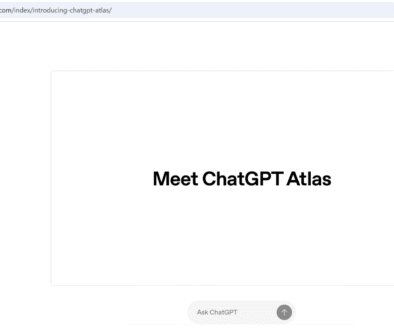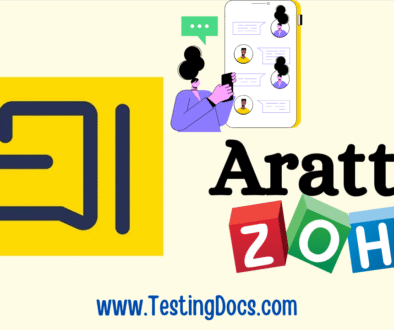AI bubble Burst News
AI bubble Burst News
This article explains what the AI bubble is, what a burst would look like, and what leading CEOs are publicly saying about the risk.
What is an “AI bubble”?
In simple terms, a “bubble” happens when prices, valuations or investments in an industry get much larger than the underlying economic reality justifies. For AI, that means startups and public companies can attract huge sums of money and sky-high valuations because people expect massive profits — not necessarily because those profits (or customers) already exist. Think of it as excitement and money racing ahead of the actual, proven business results.
Bubbles have a life cycle:
early innovation and excitement → rapid investor influx → frothy valuations and speculation → triggering event(s) that reveal the mismatch → sharp drop or “burst” in valuations.
The AI boom of 2023–2025 has many hallmarks of that pattern: enormous investor interest, big infrastructure spending, and valuations that sometimes outrun revenue and profitability.
What does “AI bubble burst” mean?
A burst means a rapid and significant fall in market confidence, valuations, or investment flows tied to AI companies. Practically, that could look like:
- Sharp declines in stock prices for AI-heavy firms, including some startups and public tech names.
- Venture funding drying up or becoming much harder (higher interest rates, tougher due diligence).
- Layoffs, canceled projects, or paused data-center and chip buildouts as firms tighten belts.
- Rationalization of hype: products that promised too much get downgraded, and some companies fail to deliver on monetization.
A burst is rarely the end of a technology — more often it clears out weaker firms and irrational valuations. Long-lived, useful technologies (like the internet after the dot-com bust) typically survive and eventually deliver value — but not without a period of pain and consolidation.
What CEOs’ say
Sundar Pichai — Alphabet / Google
In a BBC interview on November 18, 2025, Alphabet CEO Sundar Pichai warned that the AI sector is experiencing “irrationality” and that “no company is going to be immune” if the AI bubble bursts. He acknowledged the extraordinary momentum behind AI while cautioning investors and companies about outsized expectations.
Sam Altman — OpenAI
OpenAI CEO Sam Altman has publicly acknowledged that AI is in a bubble phase and that investor enthusiasm can be excessive. Altman has said bubbles often form around a kernel of truth — meaning AI could be transformative even while current investment patterns are risky — and warned that some people and firms may overinvest and lose money in the short term.
Jamie Dimon — JPMorgan Chase
JPMorgan Chase CEO Jamie Dimon has taken a balanced stance: while he says AI is real and will “pay off” in aggregate, he has warned that some AI projects or stocks could be overvalued and that investors should be cautious because some money may be lost in a correction. Dimon’s comments reflect a common financial-sector view: don’t dismiss the technology, but do watch valuations.
Satya Nadella — Microsoft
Microsoft’s Satya Nadella has emphasized the enormous capital and power needs of AI, and the company has been rapidly scaling data-center capacity. Nadella’s public comments have focused less on labeling a “bubble” and more on operational realities — capacity constraints, energy and infrastructure limits — which implicitly highlight how high investment and expectations have become. Those remarks were offered alongside warnings about practical bottlenecks rather than outright dismissal of AI’s long-term value.
Possible real-world consequences of a burst
If an AI bubble partially bursts, expect a mix of outcomes:
- Short-term hiring freezes and layoffs at startups or divisions with weak business models.
- Slower venture fundraising and a return to more rigorous revenue metrics rather than growth-at-all-costs valuations.
- Consolidation — established players may acquire smaller ones at lower prices (or simply outlast them).
- Regulatory and public scrutiny could intensify as policymakers react to market instability and societal impacts.
At the same time, genuinely useful AI applications that produce clear productivity or cost benefits are likely to continue being adopted — the burst mainly weeds out hype and malinvestment.
AI investment and Hype
If you’re not a professional investor, here are sensible takeaways:
- Separate technology hype from business fundamentals. Does the product make money or save money for customers?
- Avoid “FOMO” (fear of missing out). Investing because of headlines is risky; learn the business or speak to a financial advisor.
- For careers: focus on durable skills (data literacy, engineering fundamentals, domain expertise) instead of banking on a single startup’s stock.
- For consumers: expect product cycles. Some services may change pricing or feature sets during market turbulence, but core research and useful products usually persist.
Top FAQs — AI bubble burst
What exactly would trigger an AI bubble to burst?
Triggers include a major funding pullback, a high-profile company failing to monetize promised features, macroeconomic shocks that reduce risk appetite, or sudden regulatory action that makes current business models harder to execute.
Does a burst mean ‘AI is over’?
No. History shows that technology can survive a financial correction. The 2000 dot-com crash didn’t kill the internet; it removed unsustainable companies and business models, leaving room for durable winners. Expect a similar pattern with AI: cleanup and consolidation, followed by steady advancement.
Should I sell my tech stocks now?
This article isn’t financial advice. Decisions depend on your risk tolerance, time horizon, and the specific companies you own. If you’re uncertain, consult a licensed financial advisor.
Will AI-driven job losses accelerate after a burst?
A burst affects investment flows more than the underlying utility of AI. Some projects may pause, but many companies will continue incremental automation and augmentation; the long-term labour impact will be gradual and sector-specific.
How will consumers be affected?
Consumers may see some services change prices or lose free tiers if companies retrench. However, many useful AI features integrated into mainstream products (search, photos, productivity tools) are likely to remain and evolve.

